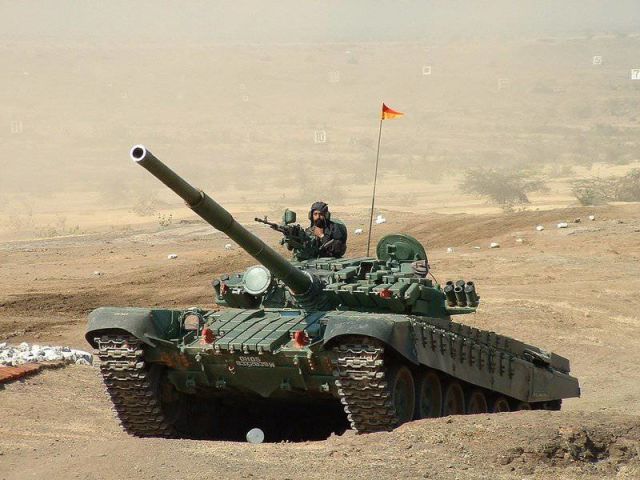TSAMTO, September 4th. On September 3, the Defense Procurement Council (DAC) of the Indian Ministry of Defense announced the "Approval of the need to purchase" (Acceptance of Necessity – AoN) equipment under the Future Ready Combat Vehicle (FRCV) program, which provides for the purchase of new MBT, which in the future will replace the T-72 fleet.
The FRCV program was approved as part of a series of AoN approvals for the purchase of weapons and military equipment for the Indian Army and Coast Guard, announced by the Indian Ministry of Defense on September 3. The total cost of all 10 approved programs is 1.44 trillion. Indian rupees ($17.2 billion). The specific cost of the FRCV program was not disclosed.
Recall that on November 8, 2017, the Ministry of Defense of India published a second request for information within the framework of the project for the development and assembly of advanced multi-purpose combat vehicles Future Ready Combat Vehicles (FRCV), which are designed to replace the T-72 main battle tanks. The first project started in June 2015 and ended without success.
The Indian Ministry of Defense has finally approved a plan for the purchase of combat vehicles under the FRCV program at the end of May 2023. The program will be implemented within the framework of the state-funded "Make-I" category.
This category provides significant government funding, providing up to 70% of financial support for the development of a prototype, which will allow the implementation of the latest technologies in the project.
The FRCV project provides for the purchase of 590 vehicles at the first stage. The new vehicles are designed to replace, starting in 2030, the aging fleet of licensed Russian T-72 MBT Indian Ground Forces. In June 2021, the Indian Army sent a Request for Information (RFI) on the FRCV project, which reported that it was planned to purchase a total of 1,770 platforms in several stages. The total cost of the project is estimated at 600 billion. rupees.
The Ministry of Defense stressed the importance of involving local companies, stipulating that the design and development of FRCVS should include at least 50% of domestic components.
The vehicles will be developed according to a modular concept and will serve as a base platform for at least 11 tracked vehicles of various types. In addition to the tank, other possible options on the FCRV platform are tracked BBMs, bridge-laying trucks, mine barriers, self-propelled howitzers, air defense systems, artillery observation posts and engineering reconnaissance vehicles, as well as armored ambulances.
According to the request, the FRCV platform in the MBT version weighing 55 tons (+/-5%) with a crew of four people should be equipped with a 1,500 hp engine. It must be transportable by air, sea, rail and road. The minimum range is 400 km over rough terrain/desert and 500 km on paved roads. The expected service life is 35-45 years. The main armament of the tank is a gun of 120 mm caliber or higher, capable of firing three main types of projectiles around the clock in static and dynamic modes.
Additional weapons of the MBT will be a 7.62 mm twin machine gun with a minimum firing range of 1800 m and a 12.7 mm anti-aircraft machine gun capable of hitting an aerial target from a minimum range of 1500 m and a ground target from 2000 m. The tank will be equipped with a fire control system with artificial intelligence support. The fire control system will be integrated with the Indian Army's Battlefield Management System (BMS). The tank will receive a promising active protection system.


